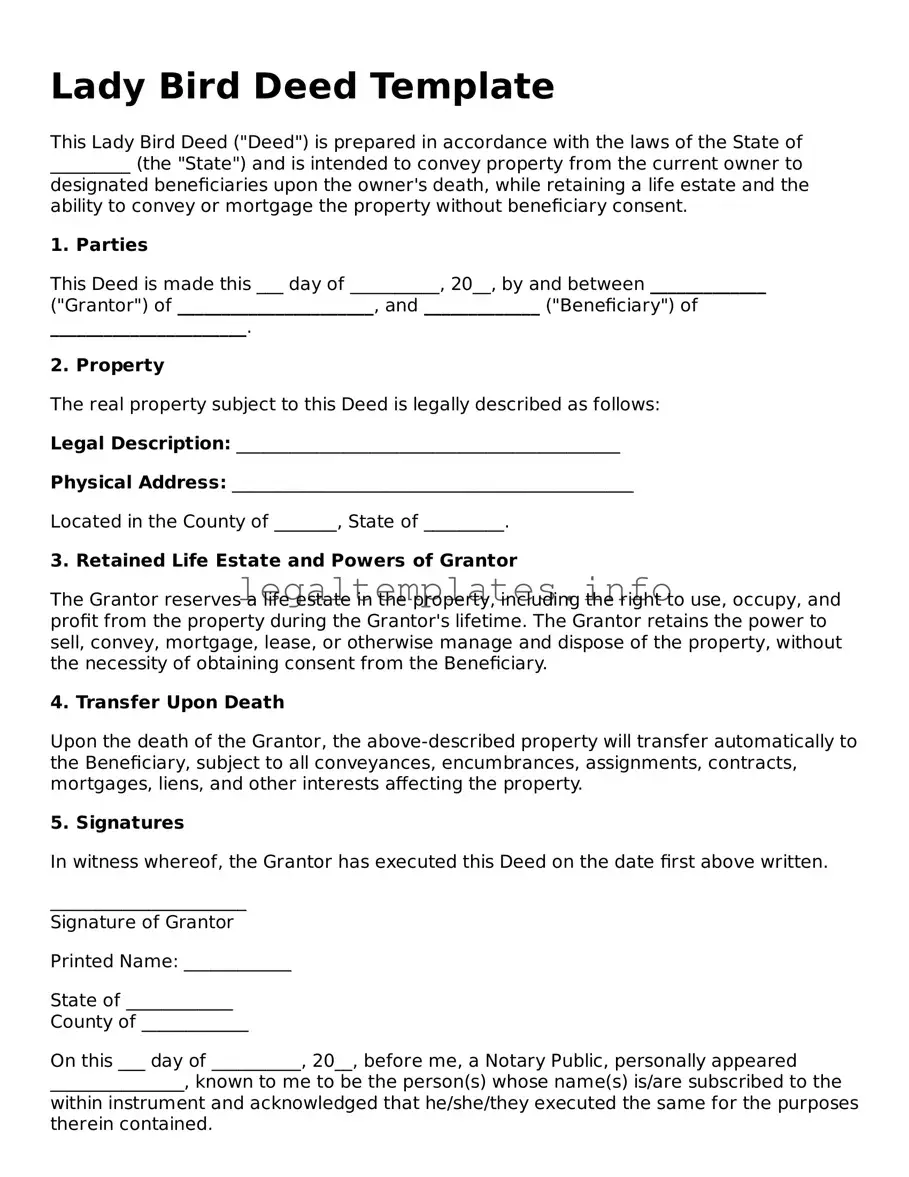Lady Bird Deed Template
This Lady Bird Deed ("Deed") is prepared in accordance with the laws of the State of _________ (the "State") and is intended to convey property from the current owner to designated beneficiaries upon the owner's death, while retaining a life estate and the ability to convey or mortgage the property without beneficiary consent.
1. Parties
This Deed is made this ___ day of __________, 20__, by and between _____________ ("Grantor") of ______________________, and _____________ ("Beneficiary") of ______________________.
2. Property
The real property subject to this Deed is legally described as follows:
Legal Description: ___________________________________________
Physical Address: _____________________________________________
Located in the County of _______, State of _________.
3. Retained Life Estate and Powers of Grantor
The Grantor reserves a life estate in the property, including the right to use, occupy, and profit from the property during the Grantor's lifetime. The Grantor retains the power to sell, convey, mortgage, lease, or otherwise manage and dispose of the property, without the necessity of obtaining consent from the Beneficiary.
4. Transfer Upon Death
Upon the death of the Grantor, the above-described property will transfer automatically to the Beneficiary, subject to all conveyances, encumbrances, assignments, contracts, mortgages, liens, and other interests affecting the property.
5. Signatures
In witness whereof, the Grantor has executed this Deed on the date first above written.
______________________
Signature of Grantor
Printed Name: ____________
State of ____________
County of ____________
On this ___ day of __________, 20__, before me, a Notary Public, personally appeared _______________, known to me to be the person(s) whose name(s) is/are subscribed to the within instrument and acknowledged that he/she/they executed the same for the purposes therein contained.
In witness whereof, I hereunto set my hand and official seal.
______________________
Notary Public
My commission expires: ____________
